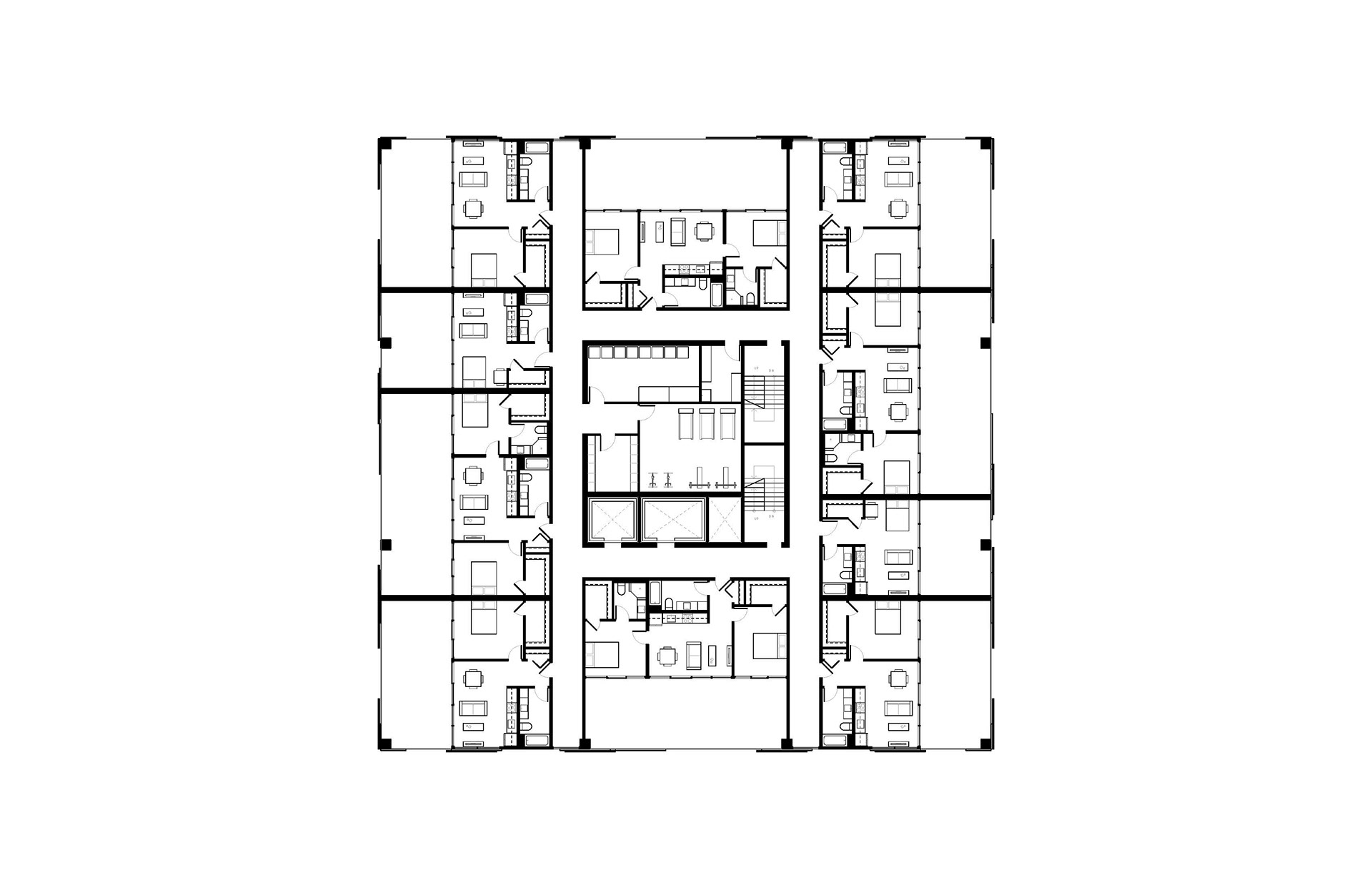SUPER MAT
2018
School Project (Instructor: Daniel Jacobs)
In collaboration with Madison Strakele
*Redrawn in 2019
Super Mat blurs the line between suburban and urban, creating a productive peculiarity from the symbiosis in which the detached dwelling, backyard, and garage parking typically found in suburbia challenge the infamous superblock.
The low lying mat typology contains interconnected clusters of residential units, interspersed with publicly accessible community amenities at a density greater than double that of a similar swath of nearby residential neighborhood.
The semi-public parks, here the translation of the corridor, are flanked by private enclosed yards. In contrast to the suburban model which separates the public front yard from the more private backyard, the forecourts can open up to the adjacent public space, allowing expansion at the expense of privacy, and offering opportunities for a sense of community to develop.
At 81 units across roughly 8.5 acres, the project offsets the mat’s lack of ruthless efficiency present in a typical super-block by introducing a residential tower along Jefferson Avenue. Containing an additional 170 units, the tower brings the total unit count for the project up to 251.
Shifting the tower away from the water’s edge, unlike the adjacent sites, the project reconsiders waterfront development along the River: the tower maintains views of the water and Belle Isle while allowing the mat and its boardwalk to integrate with the continuous riverwalk and pocket parks.


The semi-public parks, here the translation of the corridor, are flanked by private enclosed yards. In contrast to the suburban model which separates the public front yard from the more private backyard, the forecourts can open up to the adjacent public space, allowing expansion at the expense of privacy, and offering opportunities for a sense of community to develop.
The fence enclosing the unit’s yard and wrapping nearly the entire complex, is a series of rotating panels clad in a corrugated, perforated mesh to create a dynamic threshold between the private and public. In the closed position, a sense of privacy is achieved that filters light, sound, and views of the activity beyond. When opened, the panels act as large slats, offering controlled levels of privacy and connection to the park.